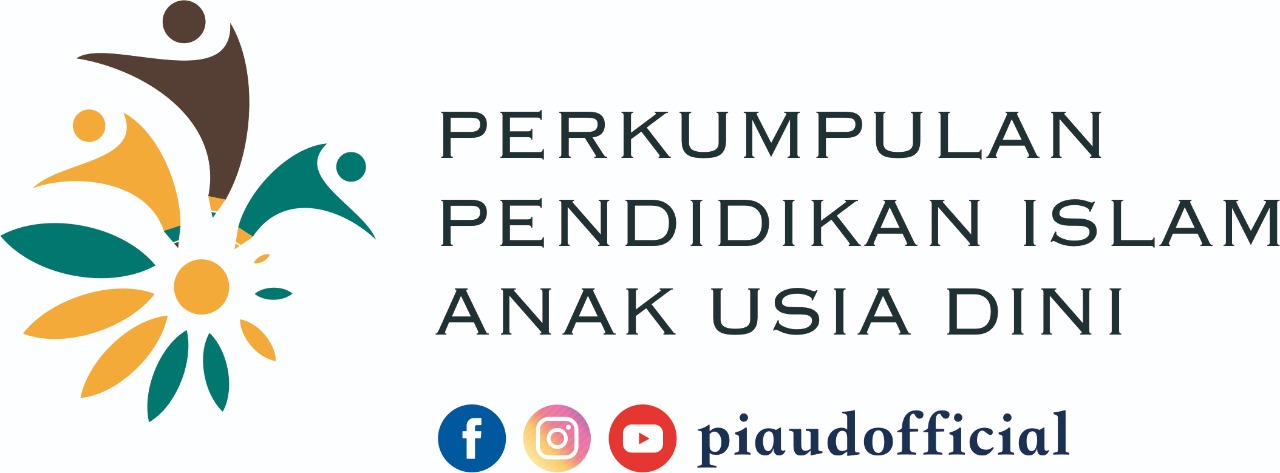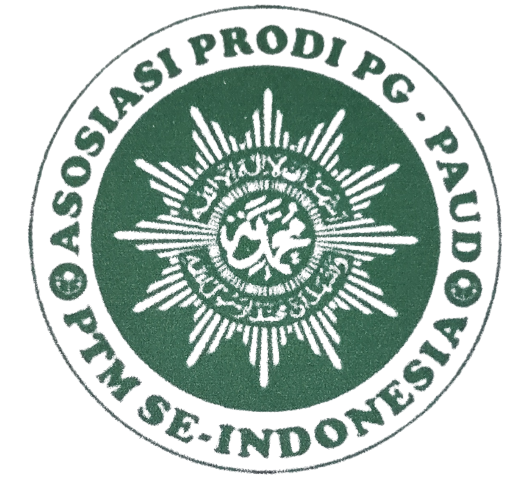The Position of Teachers in the Development of Early Childhood Character Education
Abstract
The teacher's position once looked down upon, is now considered a professional and even stipulated in Law no. 14 of 2005 Chapter II Article 2. Therefore, the position of the teacher now is no longer just teaching but also educating, fostering, motivating, and becoming a model for students. Efforts to instill commendable behavior in early childhood can be made through character education if a teacher understands his position. This study sought information about the teacher's position in instilling character education in early childhood at Shafa Marwah Karawang Kindergarten. The method used in this research is qualitative with descriptive analysis. Data collection techniques using passive participatory observation, semi-structured interviews, and documentation. The results of the study show that the teacher's position in the development of early childhood character education at Shafa Marwah Karawang Kindergarten is not only as a learning resource, facilitator, manager, demonstrator, mentor, and evaluator but also has a position as a motivator. Teachers are also motivators because the teachers 1) explain or give direction and guidance on the objectives of each activity carried out, 2) arouse student interest will be encouraged them to learn and get used to it well, 3) use various learning models and strategies, 4) creating a pleasant atmosphere, and 5) giving awards or praise to students after doing commendable things.
Keywords
Full Text:
PDFReferences
Alawiyah, F. (2012). Policy and Development of Character Building Through Education in Indonesia. Aspirations , 3 (1), 87–101. https://doi.org/10.32672/pic-mr.v5i2.5404
Atmanti, HD (2005). Investment in Human Resources Through Education. Development Dynamics , 2 (1), 30–39. https://doi.org/10.36908/isbank.v8i1.480
Chapnick, A. (2008). golden age. International Journal , 64 (1), 205–221. https://doi.org/10.1177/002070200906400118
Fauziah, I. (2014). The role of the teacher in presenting the character of students . 7 (2), 1–8. doi:10.17051/ilkonline.2020.693109
Hidaya, N., & Aisna, Y. (2020). Early Childhood Character Education as an Effort to Improve National Character: Literature Review. Hawa Journal: Gender and Child Mainstreaming Studies , 2 (1), 11. https://doi.org/10.29300/hawapsga.v2i1.2793
Intan, Uchi, LA (2020). Parental Participation in Children's Character Education. Bahastra: Journal of Indonesian Language and Literature Education , 5 (1), 63–68. https://doi.org/10.30743/bahastra.v5i1.3046
Israwati. (2017). Management of Early Childhood Education Classrooms in Group B in Kindergarten. Porch Science Journal , 29 (9), 1689–1699. https://doi.org/10.46743/1540-580X/2012.1407
Khaironi, M. (2017). Early Childhood Character Education. Golden Age Journal , 1 (02), 82. https://doi.org/10.29408/goldenage.v1i02.546
La Hadisi. (2015). Character Education in Early Childhood La Hadisi. Al-Ta'did Journal , 8 (2), 50–69. https://doi.org/10.30595/jkp.v17i1.15951
M. Saleh. (2016). Increasing Interest in Learning Simple Science Through Experimental Methods in Group B Early Childhood Children at Kb Aneka Ceria, Wonosari District, Boalemo Regency . 1–23.
Monica, MA, & Mayar, F. (2019). Paud Teacher's Strategy In Developing Creativity In Early Children. Carbohydrate Polymers , 6 (1), 5–10. https://doi.org/10.3390/ijms231810279
Muhardi. (2004). The Contribution of Education in Improving the Quality of the Indonesian Nation. PT. Scholastic Library of Science , XX (4), 345–346. https://doi.org/https://doi.org/10.29313/mimbar.v20i4.153
Mulyasa, E. (2007). Becoming a professional teacher: creating creative and fun learning (Mukhlis (ed.); 5th ed.). Youth Rosda Karya.
Ningrum, E. (2016). Development of Human Resources in the Field of Education. Journal of Geography Gea , 9 (1). https://doi.org/10.17509/gea.v9i1.1681
Nisa', TF, Karim, MB, & Mayangsari, D. (2016). Building Early Childhood Character through Learning Character Mathematics. PEDAGOGIA: Journal of Education , 5 (2), 113. https://doi.org/10.21070/pedagogia.v5i2.241
Oktavianingsih, E., & Fitroh, SF (2021). Development of an Emotional Maturity Instrument as a Measuring Tool for Readiness to Become a Professional Teacher in PG-PAUD Study Program Students. Al-Athfaal: Scientific Journal of Early Childhood Education , 4 (1), 60–76. https://doi.org/10.24042/ajipaud.v4i1.8596
Regulation of the Minister of Education and Culture. (2019). Permendikbud Number 44 of 2019. Permendikbud , 1–25.
Purnomo, H. (2013). The Role of Parents in Optimizing Children's Growth and Development to Build Early Childhood Character. Proceedings of the National Parenting Seminar , 34–47. https://doi.org/10.35335/midwifery.v10i5.1013
Putri, ON, & Hudah, M. (2019). The Effect of the Role Playing Learning Model on Basketball Material on the Character Formation of Class VIII Students of SMP Negeri 2 Keuntungan. Sports Window , 4 (2), 57. https://doi.org/10.26877/jo.v4i2.4005
Ramayulis. (2002). Islamic Education Sciences .
Ratih, RD (2019). Building Character Education for Students in Elementary Schools. Journal of Chemical Information and Modeling , 53 (9), 1689–1699. https://doi.org/10.2174/1874210602014010019
Ratnawati. (2018). The Role of the Teacher as a Model in Forming the Character of Learner Ratnawati .
Robingatin, R., & Komariah, A. (2022). The influence of school culture and self-esteem on the character of PAUD teachers. Al-Athfaal: Scientific Journal… , 5 (2), 191–203. https://doi.org/10.24042/ajipaud.v5i2.13753
Sholikhah, A. (2016). St A Tistik Descriptive A Tif Amirotun Sholikhah. Komunika , 10 (2), 342–362.
Suarmini, NW (2014). The Family As The First And Main Vehicle Of Children's Character Education. Journal of Social Humanities , 7 (1), 118–135. https://doi.org/10.12962/j24433527.v7i1.599
Tatminingsih, S. (2016). The Nature of Early Childhood. Development and Basic Concepts of Early Childhood Development , 1 , 1–65. https://doi.org/10.31004/obsesi.v5i1.599
Westri, Z., & Pransiska, R. (2021). Analysis of religious and moral values of early childhood in films. Golden Age Journal , 5 (02), 221–232. https://doi.org/10.29408/jga.v5i01.3497
Wina Sanjaya. (2006). Educational Process Standard Oriented Learning Strategy (Cet.V,Ed.I). golden.
Yeni, A. (2018). Methods Of The Influence Of Habitat On Children's Learning Process at Kindergarten Bangsa Tanjung Barulak Batipuh. Bitkom Research , 63 (2), 1-10.
DOI: http://dx.doi.org/10.24042/ajipaud.v6i1.15884
Refbacks
- There are currently no refbacks.
Copyright (c) 2023 Al-Athfaal: Jurnal Ilmiah Pendidikan Anak Usia Dini
License URL: https://creativecommons.org/licenses/by-sa/4.0
 All publications by Al-Athfaal: Jurnal Ilmiah Pendidikan Anak Usia Dini [p-ISSN: 2622-5484, e-ISSN: 2622-5182] are licensed under a Creative Commons Attribution-ShareAlike 4.0 International License.
All publications by Al-Athfaal: Jurnal Ilmiah Pendidikan Anak Usia Dini [p-ISSN: 2622-5484, e-ISSN: 2622-5182] are licensed under a Creative Commons Attribution-ShareAlike 4.0 International License.













